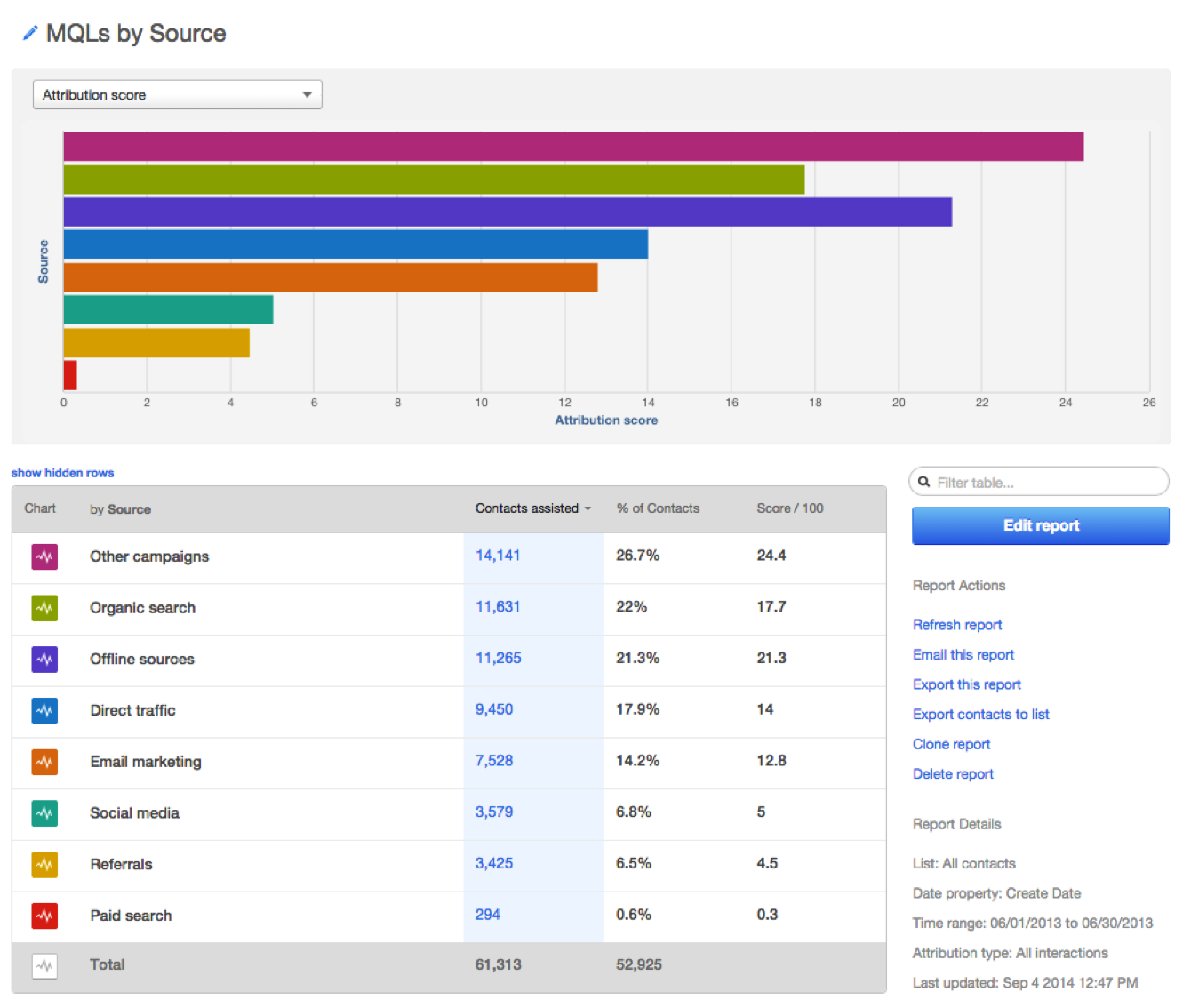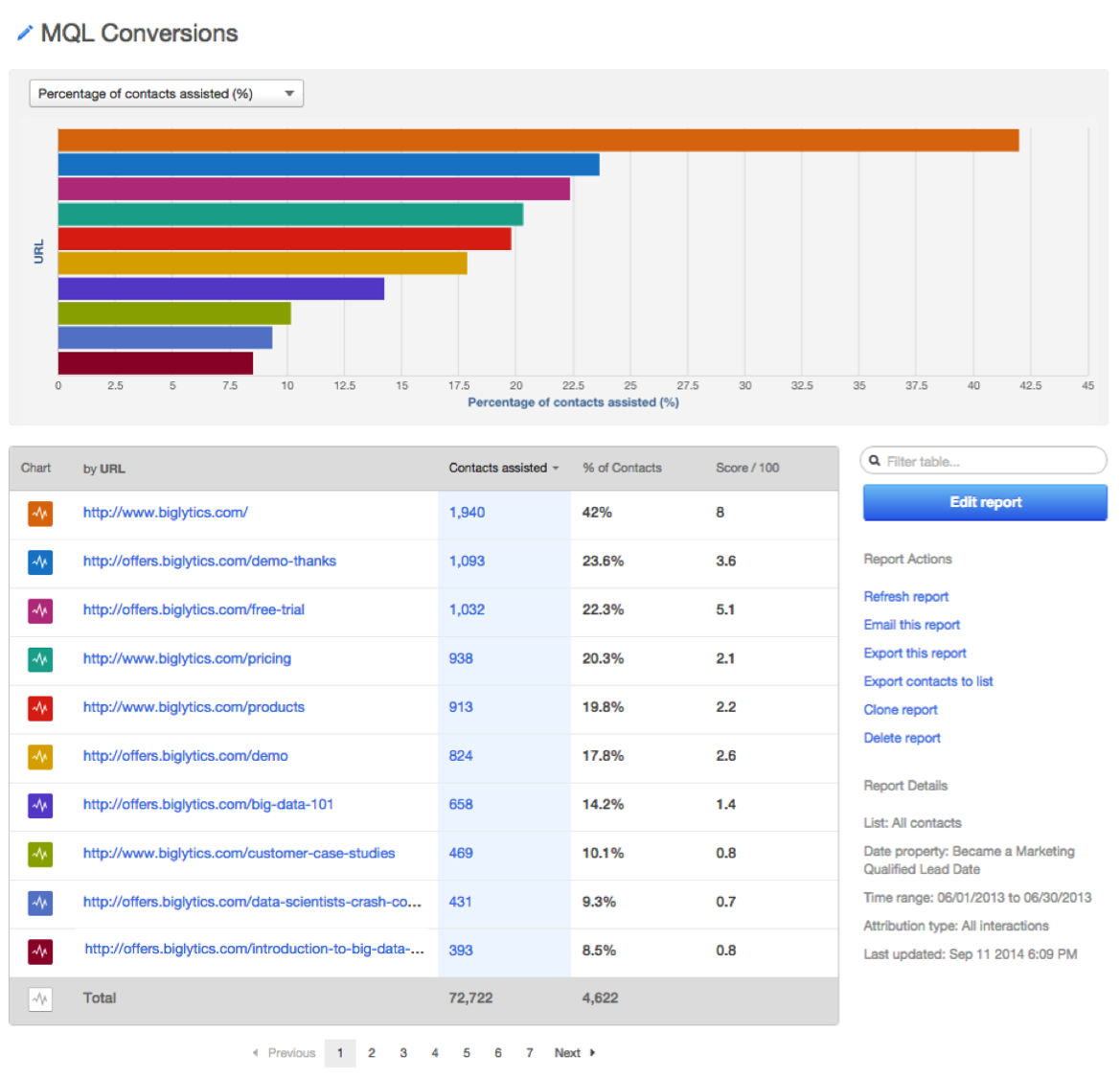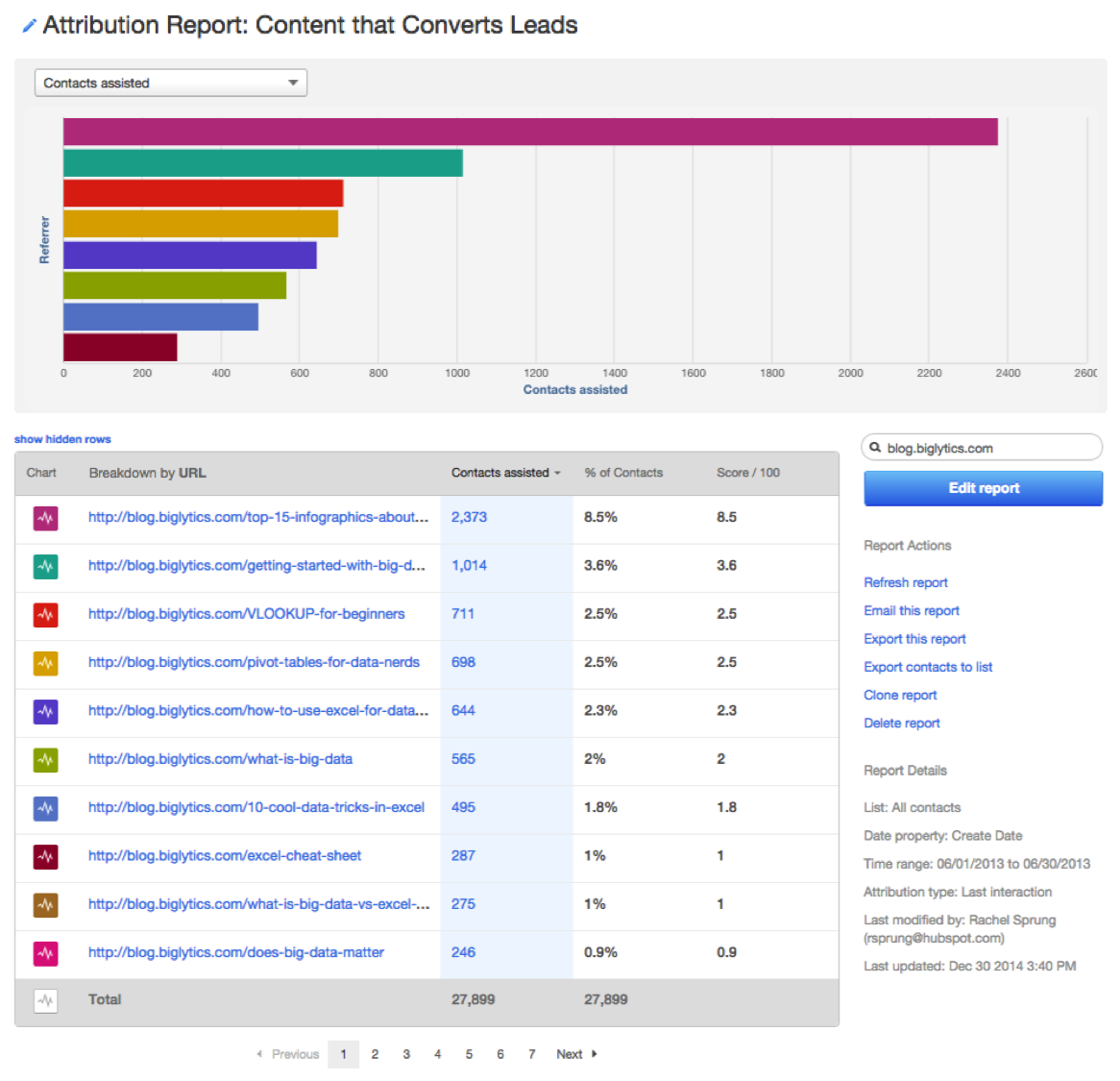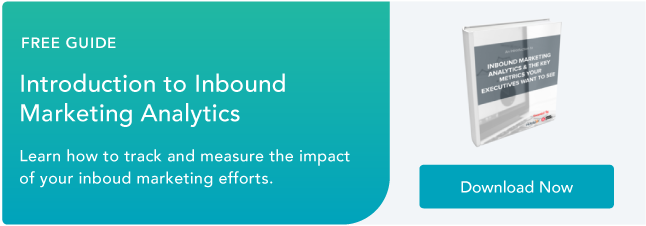Truthfully, there are tons of metrics that you can report on. You've got reports on the number of Twitter followers, the number of Facebook Likes, the number of visits to your website, the number of conversions, the number of leads from different campaigns or channels -- just to name a few. The world is your oyster.
But that's exactly what makes it so hard to get started -- there are so many reports you can run that it's not easy to identify the ones that are actually helpful, run them, and then act on them.
To help you wade through the haze of reports at your disposal, here are the key, basic reports that marketers should think about running.
Report #1: Your typical reports, but segmented by persona type.
You probably have a set of reports that you typically look at on a regular basis. That could be the number of pageviews your website is getting, the number of leads you are generating per month, or possibly how your various marketing channels are doing. Whatever you are looking at, you can probably dig in a bit deeper into the data.
These reports don't give you information about what your buyer persona likes and how they're acting on your website -- so you should create separate reports for just your persona segments. You may uncover insights that you originally glossed over because the original report was too broad.
From that segmented report, you can then use the data from the report to decide how to market specifically to that part of your audience. After all, different personas are interested in different topics, different formats, and different communication channels.
Let's take a look at the example below. This report looks specifically at data for the persona Big Data Billy. It tells us that Billy is interested in predominantly ebooks and whitepapers -- but not blog posts. Based on that information, I might want to devote more resources to ebooks and whitepapers.

Report #2: Sources that drives MQLs.
In addition to your persona-specific metrics, it's important to understand which sources are driving traffic to your website. Tracking conversions by source is the first step towards true closed-loop reporting. To dig even deeper, take a look at which sources are generating marketing qualified leads. This is a report that helps you understand the health of your funnel, giving you a better idea of how well you're holding up your part of your company's SLA.
Let's take a look at the report below, MQLs by Source. This report gives you insight into how many marketing qualified leads you are driving as a result of your different marketing channels. You can use the score column on the right to figure out the most valuable marketing channel. The higher the score, the more time you might want to invest in that channel to drive more MQLs.
(HubSpot Customers: Take a look at this blog post to find out how to do this in HubSpot.)

Report #3: Content that drives MQLs.
In addition to looking at the most important sources for driving conversions, it is also important to look at the content that drives those conversions. This can help you figure out what content should actually be promoted through various channels to get more MQLs in the door.
While understanding what pages are viewed the most is a good metric, the conversion rate on your different pages is a great metric. This metric helps you really understand what content moves website visitors throughout your funnel.
Let's take a look at the report below to show you what one of these reports looks like. This report displays the content that marketing qualified leads are viewing before and during a conversion. If you take this report and the previous report together, you have your full package. You can decide the best content to promote through your best channels to achieve the best outcome possible.
(HubSpot Customers: Take a look at this blog post to find out how to do it in HubSpot.)

Report #4: Content that generates leads.
While understanding content that drives marketing qualified leads is important, it is also important to understand the content that drives conversions in other areas of your funnel. Before someone is qualified enough to be considered an MQL, they're probably a regular ol' lead. And to get more MQLs in the door, you need to get more leads in the door.
And the content that your leads find important may be different than what your marketing qualified leads and customers find important. Understand what content is being consumed at each stage of the funnel can help you formulate a plan to move your visitors down it. You can also experiment with showing some of the content that converts leads to marketing qualified leads earlier to decrease the amount of time it takes to turn someone from a lead into a marketing qualified lead.
Let's take a look at the report below. This report shows the different URLs that contributed to lead conversions ranking in order of importance.

Report #5: Content that converts customers.
If you skipped ahead to the image instead of reading this text first, you may be thinking that this looks like the same report as well! You're 90% right.
While each of these reports are the same, the part of the funnel you're investigating is different. The content that helps convert people in each stage of the funnel is different -- so you've got to dive deep into each to do a full, quality analysis.
Let's take a closer look at the report below. This is showing the content viewed as your leads (or marketing qualified leads) become customers. Ultimately the goal of creating content is to drive customer conversions. This information will help you prioritize the content that drives customers to help your company close more deals.

Report #6: Actions that your website visitors are taking.
We have talked a lot about how to report on the content your website visitors are viewing in addition to the sources they are coming to your website from. But what about the different actions they take on your website? They may prefer certain CTAs over others. Or maybe they always view certain pages. Maybe a certain image gets their attention. Whatever it is, it is important to track how people are interacting with your website -- and see how these interactions play into your funnel metrics.
After you collect this information, there are a few things that you can do with it. First, you can build a report to better understand the people who took the action. You should find out of the people who took the action, how many became new leads? Did any become customers? This will help you understand the importance of the action. For example, let's say that you're tracking who is clicking on a CTA that says "contact us" while on your pricing page -- and people that do tend to become customers faster than those who don't click on that CTA. This could tell you that you might need to test out a more prominent design for that CTA, or experiment with putting that CTA on other parts of your website.
If you are a HubSpot customer, here's how to use the events app in HubSpot.

What other marketing reports do you use to measure your team's performance?





-Oct-10-2023-02-55-07-8252-AM.png)
-Apr-22-2023-12-26-04-1013-AM.png)
.png)
![How to Calculate Marketing ROI [+Free Excel Templates]](https://53.fs1.hubspotusercontent-na1.net/hubfs/53/Marketer%20calculating%20ROI%20in%20marketing%20from%20free%20Excel%20templates.jpg)

![How to Create a Funnel Report [Quick Guide]](https://53.fs1.hubspotusercontent-na1.net/hubfs/53/funnel-reporting_1.webp)

